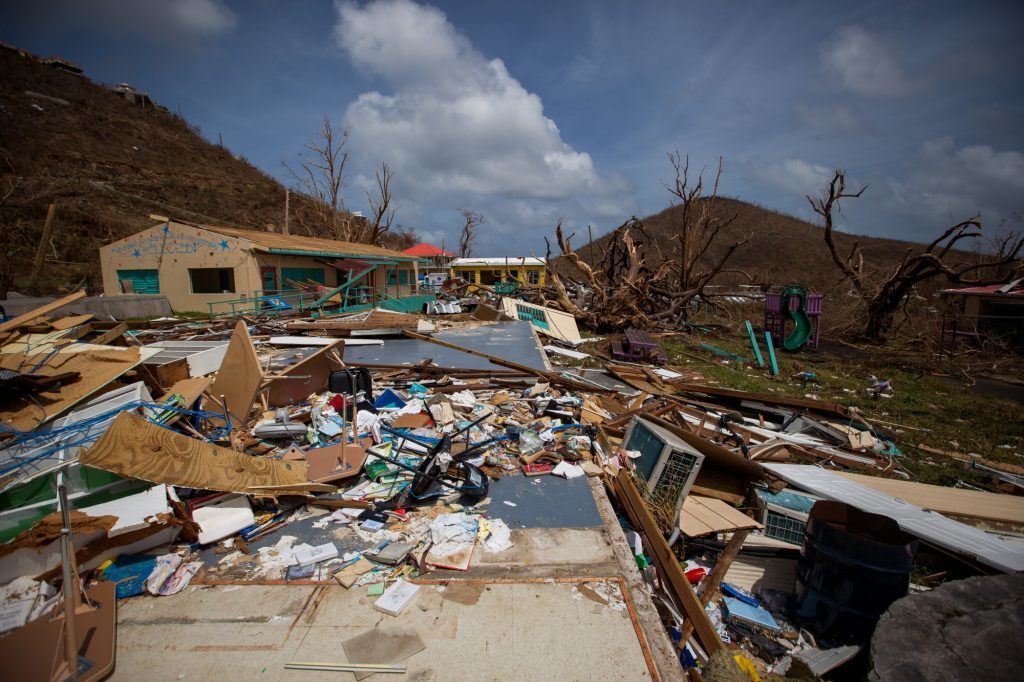
Homeowners and businesses not incapacitated by the storm have begun the arduous and emotional work of separating destroyed possessions and materials by type and placing them curbside. Cities have begun the intimidating logistics of picking it up and transporting it to its final destination.
And what is that destination? Texas’s waste-disposal strategy takes advantage of the state’s vast land. Harris County alone, which includes Houston, has 14 active landfills.
Florida, by contrast, is a peninsula with a longer coastline than any state other than Alaska, and much less room for trash. Many coastal Florida counties burn theirs, with waste incinerators particularly common around the state’s populous southern lip and up the Gulf Coast. It’s a two-fer. Combustion reduces the solid waste to ash, and the heat that’s produced runs steam generators. Much of the waste left in Irma’s path will burn, the energy released adding to local communities’ electricity.
Florida burns a disproportionate amount of U.S. trash. Ten “waste-to-energy” plants turned 4.5 million tons of trash into 3.5 million megawatt-hours statewide in 2016. That’s about 2 percent of the state’s overall power, and a large majority of its renewable energy. Burning trash makes up less than 0.5 percent of overall U.S. electricity production, according to the Energy Information Administration.
But the main point is to make stuff disappear. Incineration reduces the solid mass of trash by up to 90 percent. The leftover ash can then be more efficiently dumped in a landfill where space is precious. In 2016, Florida burned 12 percent of its trash, recycled 44 percent, and another 44 percent went into landfills. With all that, Florida has historically been an exporter of garbage to other states, the 10th largest in a 2007 study by the Congressional Research Service.
Waste-fueled power plants were built mostly in the 1980s and early 1990s, encouraged by a 1978 federal law. Environmental scrutiny in later years led to widespread retrofits of pollution-control technologies to remove mercury and dioxin.
Burning stuff up doesn’t make it entirely disappear, even once the ash is disposed of. Part of the mass of the original garbage is converted into carbon dioxide and released into the atmosphere. But this pollution may beat the alternative. If the same volume of waste were tossed into landfills, eventual emissions of methane, a more powerful greenhouse gas, would be even worse for the atmosphere.
That makes garbage an attractive, if marginal, alternative to fossil fuels in some areas. The Intergovernmental Panel on Climate Change, the authoritative scientific group backed by the United Nations, supported waste-to-energy plants as a low-carbon technology back in 2007. Before its next report, in 2014, costs for plants had fallen 15 percent globally.
Before Irma hit, Florida Department of Environmental Protection staff worked with local governments and facilities to anoint disaster-debris sites, sort of a purgatory for trash before it’s moved to incinerators. (After storms, the DEP coordinates with multiple state and federal agencies, including the U.S. Army Corps of Engineers, FEMA, and the Florida Fish and Wildlife Conservation Commission.) Fuel for these incinerator power plants stood at high levels before Irma struck. In anticipation of the hurricane, Miami residents, for example, had doubled the amount of stuff they threw out in the days before it arrived. Already, some county authorities are seeing a spike in solid waste.
“We’ve seen about a 20 percent increase,” said Kimberly Byer, solid waste director for Hillsborough County, which includes Tampa. “That’s just an initial increase, and it’s only been a couple of days.”
The county’s 565,000 tons of trash a year produces about 45 megawatts of power, or enough to run about 30,000 homes. “It pays for itself,” Byer said of Hillsborough’s waste-to-energy facility.
Hurricane or no hurricane, people are comfortable with garbage.
Recommended for you
